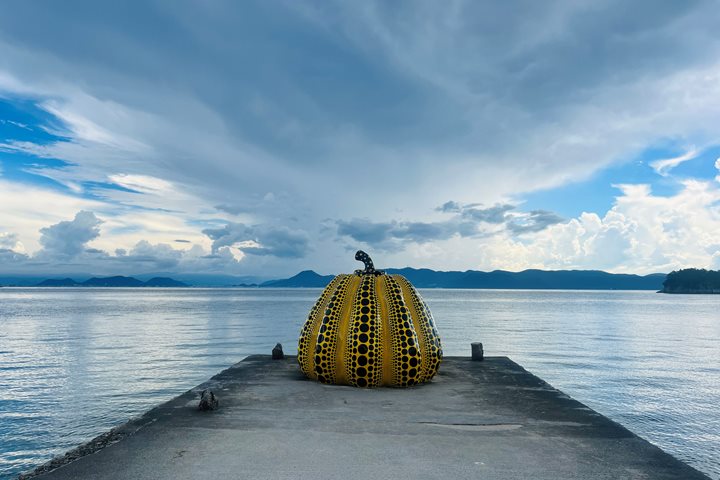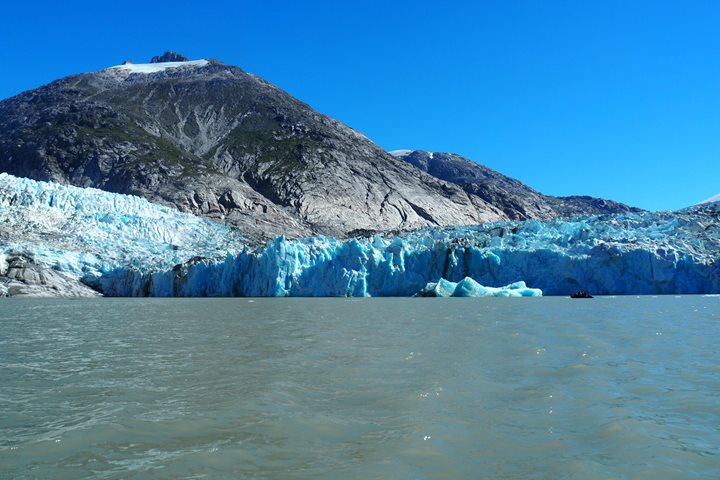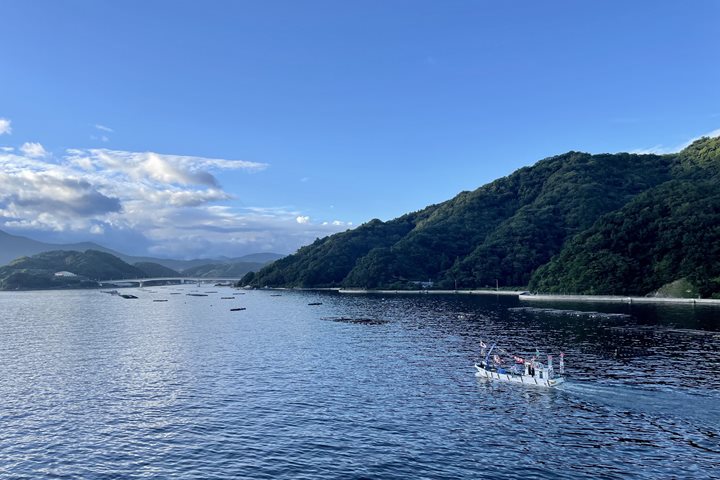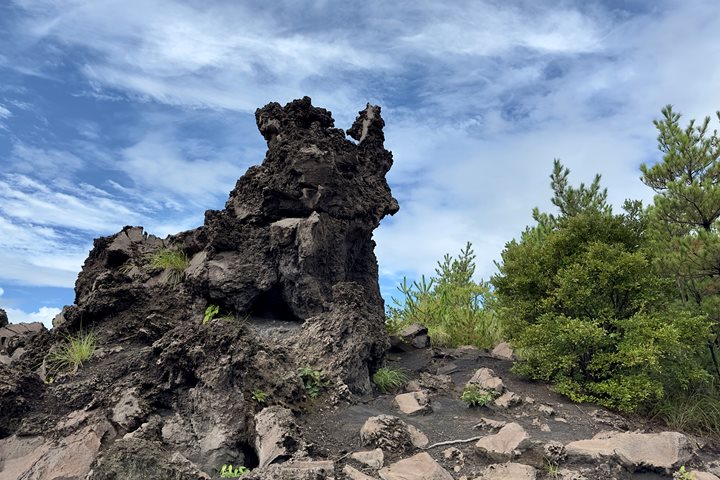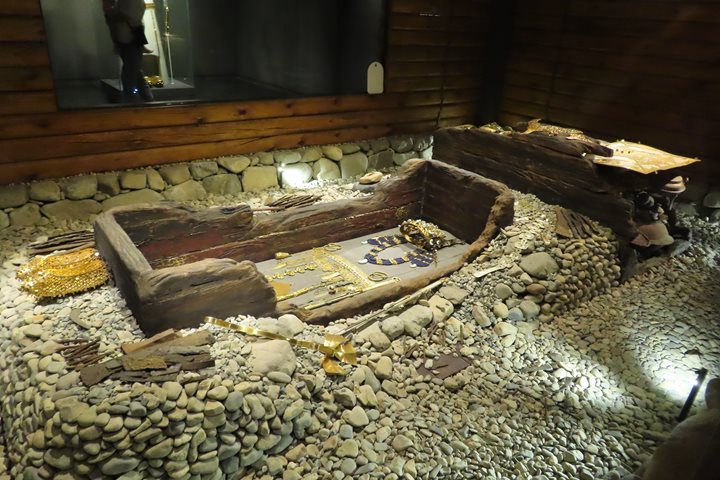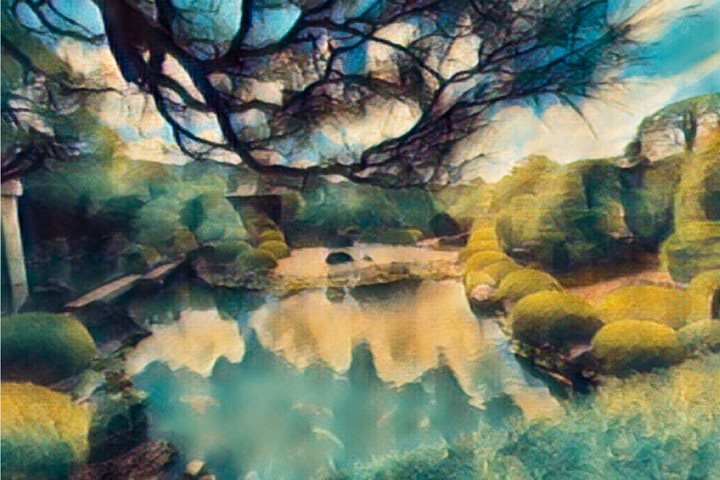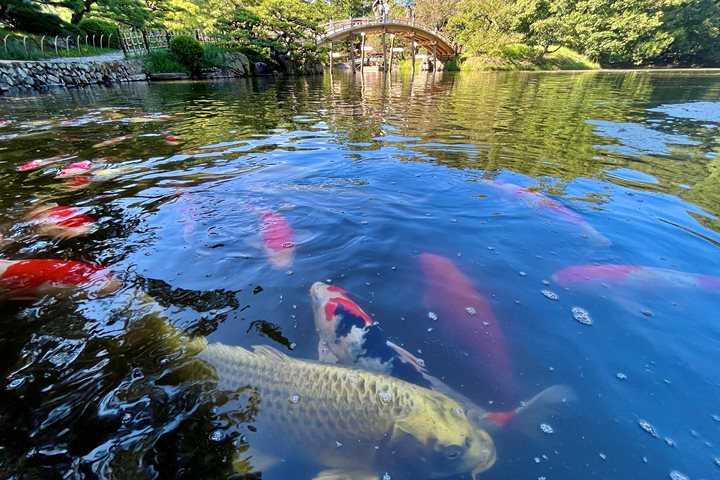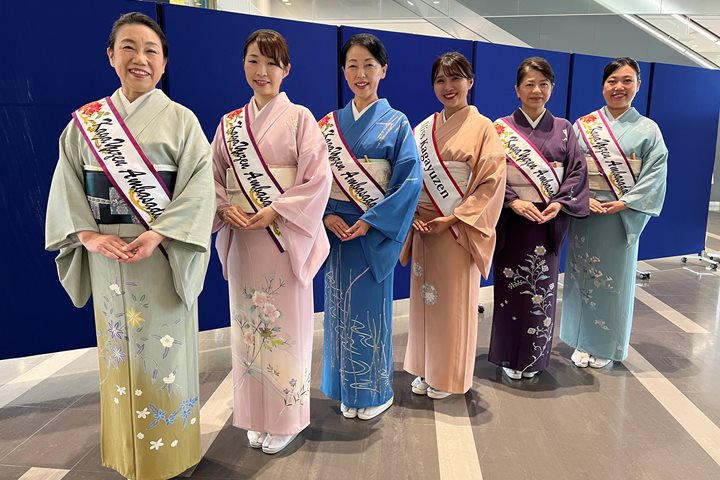Expedition Stories
Our fleet navigates the world in search of adventure. These are the stories they bring back…
Previous Reports
8/27/2023
Read
National Geographic Venture
Endicott Arm and Dawes Glacier
We began our first full day aboard National Geographic Venture by sailing through beautiful Holkham Bay into Endicott Arm. This narrow fjord southeast of Juneau is marked by cascading waterfalls and breathtaking indicators of glaciation and ecological succession. The icebergs, bergy bits, and turquoise, glacial silt-fed waters of the fjord sparkled in the unexpectedly bright sun as we spent our morning navigating towards Dawes Glacier. We received basic mandatory training on hiking in bear country and safely loading Zodiacs and kayaks, and we were introduced to our Expedition Team. We spent the rest of our morning and early afternoon in Zodiacs, exploring the fjord and the towering, active Dawes Glacier! Throughout the journey, we spied curious harbour seals, watched glaucous-winged gulls forage, heard the rumbling of calving ice off the tidewater glacier, and found our Zodiacs boarded by benevolent Vikings! Guests warmed up after their time on the water with hot cocoa and a hearty lunch of chili. We spent late afternoon preparing for a day in Petersburg tomorrow, and we learned new photography skills from our certified photo instructor. After a lively cocktail hour, recap, and dinner, we ended our night by watching Petersburg: The Town that Fish Built in preparation for an exciting and packed day in Petersburg.
8/29/2023
Read
National Geographic Resolution
Uwajima
Today we were back in Shikoku, the smallest of the four main islands of Japan. We had a lovely welcome from the local fishermen as they sailed alongside National Geographic Resolution with their colorful flags and banners. We did our second Zodiac operation of the voyage, which brought us to the dock of Uwajima. From there some of us explored the town of Uchiko with its traditional merchant neighborhood, wax production, and Kabuki theater. Meanwhile, other guests explored Tensha-en, the Date Museum, and Uwajima castle — one of the few castles in Japan that has not been destroyed by fire, natural disasters, or war. In the afternoon we explored another part of Ehime prefecture as we learned about Doi Pearl Farm and how they produce beautiful pearls from the sea. Ehime is one of four prefectures in Shikoku; it is famous for agriculture as well as aquaculture. Sea bream, yellowtail, oysters, pearls, rice, wheat, vegetables, and sake — these are all products of Ehime. As we departed from Uwajima we left the Seto Inland Sea behind and traveled south toward the beautiful island of Yakushima.
8/31/2023
Read
National Geographic Resolution
Kagoshima, Kyushu, Japan
This morning, National Geographic Resolution cruised into Kagoshima Bay and made our first visit to the southernmost of the main islands, Kyushu. The scenery from the waterfront is dominated by the active volcano Sakurajima, just a short distance across the bay. Some of us made an excursion to this volcanic island and enjoyed a foot soak at one of the many hot springs, while others rode south to a beautifully preserved samurai town. In the afternoon, we all enjoyed a stroll through the lovely Sengan-en garden and the real highlight of the day, a performance by the Little Cherries. This fantastic jazz band of middle school students sent us off in great style.
9/2/2023
Read
National Geographic Resolution
Busan, South Korea
Dawn heralded our arrival in a new country this morning, and in the morning’s grey light, we sailed into Busan, South Korea's major south coast port. Tall waterfront apartment buildings, busy docks, and spectacular freeway bridges lit up the harbour while morning mist and tendrils of cloud skirted around the nearby mountain tops. After an early breakfast, it was all aboard the luxury coaches, each complete with an extensive sound system sufficient to rival any nightclub. Our journey led us to Gyeongju, one of South Korea's most famous World Heritage Sites and home of the ancient Silla Kingdom, essentially the original kingdom of Korea. After entering the Daereungwon Tomb Complex and its impressive collection of high earthen burial mounds, we entered the Cheonmachong tomb. The tomb was excavated in the 1970s and is now a small museum showing the heart of the burial chamber and the rich treasures found within, much as it must have appeared when it was opened by archaeologists. Only a short distance away was the fascinating Cheomseongdae Observatory. It was built in the 7th century and is the oldest astronomical observatory in Asia. Before lunch, we contextualised these sites with a visit to Gyeongju National Museum, home of countless artefacts recovered from the surrounding area and displayed to chronologically tell the story of the Silla Kingdom. Lunch provided a welcome opportunity to relax. Four coaches of guests split across two traditional Korean restaurants with an impressive selection of dishes, some spicier than others! Post lunch, we visited Bulguksa Temple, an extensive 8th century Buddhist temple. King Gyeongdeok, who reigned during its construction, never lived to see it completed. Once finished, many of the temple’s buildings were burned down during samurai invasions from Japan in the following centuries. Even so, the considerable number of well-preserved, surviving structures represents the high point of stone construction in the Silla period. Once back on the ship, it was back to Japanese history with historian Maria Intxaustegi's talk on the Nanbanjin (or southern barbarians) and the story of early encounters between Japan and the western world.
9/4/2023
Read
National Geographic Resolution
Matsue, Japan
After a beautiful sunrise and approach to the port of Sakaiminato, we set off to explore lovely Matsue with two primary destinations and a delicious lunch in between. The Matsue (or Black) Castle is one of only a few remaining original wooden castles in Japan. Set in a gorgeous setting, those of us who climbed the steep stairs to the top were rewarded with panoramic views and a cool breeze. The Adachi Museum of Art was our second highlight. Not only was there an incredible collection of art including the stunning Autumn Leaves , but the gardens were the art. These gardens were my favorite of the entire trip, and they were incorporated into the museum concept. Gardens and nature are art! Photo caption and photographer: Watercolor filter of the gardens at Adachi Museum of Art. Photo by Mike Greenfelder
8/27/2023
Read
National Geographic Resolution
Takamatsu
It is hard to explain the calm, peace, and joy experienced when wandering around the fantastic Japanese garden of Ritsurin, one of the most famous Japanese gardens. Walking under the old pines, we admired the wooden bridges and fed the koi. We were transported to the Samurai Period today on yet another gorgeous day in Japan.
8/28/2023
Read
National Geographic Resolution
Miyajima and Hiroshima
We began our day with a long transit on Zodiacs to the morning’s destination for exploration, the beautiful Japanese island of Miyajima. The world-famous, vermillion, overwater torii gate is just a short stroll from the dock, and we were astonished to find an even more beautiful Shinto shrine complex behind it. In addition, a massive Buddhist temple located just uphill from the water delighted all who visited. In the afternoon, the ship repositioned to the nearby port of Hiroshima. We were greeted by a fireboat display and a full brass band on the dock, but the jubilation did not last. We loaded onto coaches and paid a visit to the site of the first atomic weapon detonation as well as the museum and monuments erected as a symbol of peace. A somber and reflective mood persisted through the rest of the afternoon. It’s one thing to read about the destructive power the US unleashed on Japan almost 80 years ago, but it’s quite another to visit the site in person. We finished the day with dreams for a peaceful future.
8/30/2023
Read
National Geographic Resolution
Yakushima, Japan
This morning we were at sea, listening to presentations and watching boobies catch flying fish. We then arrived at the island of Yakushima. Our goal for the afternoon was to visit the incredible forest here. We set off, twisting and turning our way up into the clouds at Yakusugi. Here a boardwalk helped us to penetrate this mind-blowing forest. Giant ancient sugi (Cryptomeria) or “Japanese cedar” trees surrounded us. We visited a few of the biggest, oldest trees, with one dated at approximately 1,800 years (yes, one thousand eight hundred years old!). The forest here is every shade of green, with a raging river roaring in the valley below. Some of us enjoyed the native birds and even Japanese macaques. All too soon it was time to head home and prepare for another amazing day exploring Japan.
9/1/2023
Read
National Geographic Resolution
Nagasaki
National Geographic Resolution sailed this morning to Dejima Wharf in Nagasaki Harbor, Japan. Arriving at the very place where the West was confined in Japan for over 200 years was an incredible way to connect with history, and that theme continued throughout our day. In the morning we visited the Sofuku-ji Temple, a Chinese Buddhist temple dating back to the 1600s. We also explored the Catholic Oura Church in Nagasaki, and learned about the sad history of persecution that took place there; held in the context of history, many things must be made relative. To continue the contemplative note of the day, in the afternoon we visited Peace Memorial Park and the Atomic Bomb Museum to learn about the destruction that took place there on Aug 9, 1945, 11:02am.
9/3/2023
Read
National Geographic Resolution
Hagi, Yamaguchi
We are back in Japan after a lovely day in South Korea, and our first destination is Hagi in Yamaguchi prefecture. The small town is famous for its beautiful pottery and ceramics. We started the day by visiting the Kagaya traditional house in the downtown area, where we saw great examples of tatami floors, Japanese interior design, and a beautiful garden. We had lunch at a local family restaurant in Hagi with multiple dishes including fugu – the Japanese pufferfish – and other delicacies. After lunch, we headed to the pottery museum to learn about the introduction of ceramics and pottery to Japan from Korea. We had time to browse through the selection of handmade teacups, dishes, and bowls. Finally, we visited the Obaku Zen Buddhist temple Toko-ji, famous for its many stone lanterns. After some damp days, we saw the sun rise again, which is appropriate as we sail farther east to our next destination of Matsue in Shimane prefecture.
9/5/2023
Read
National Geographic Resolution
Kanazawa, Japan
We pulled into Kanazawa during breakfast and were met by a welcome team of six local ambassadors wearing gorgeous kimono of kaga yuzen, the famous dyed silk from this region. After enjoying a fantastic photo opportunity with these elegant women, we set off for our full day tour of Kanazawa, one of Japan’s loveliest and best-preserved historical cities. Our first stop was Omicho Market, the “kitchen of Kanazawa” and the city’s largest fresh food market since the mid-1700s. We strolled through a myriad of stalls selling fresh crab, enormous oysters, expensive luxury fruits, and local vegetables. We ogled the amazing variety of seafood. We then continued to Kenrokuen Garden, one of Japan’s top three strolling gardens dating back to the 1600s. Kenrokuen contains the six ideal characteristics of Japanese garden: size, seclusion, artificiality, antiquity, fresh water, and views. We certainly enjoyed our time there, especially the shady parts since it was extremely hot and humid! After returning to the ship for lunch, the sky opened. We enjoyed the torrential downpour from inside the comfort of National Geographic Resolution , our home-away-from-home. We also used this time to contribute our photos to the slideshow, which will be shared during cocktail hour tonight. After lunch, we set off again for the Higashi Chaya District, a traditional neighbourhood with teahouses where geishas once performed. The area has been converted into cafes, museums, and elegant shops. Geishas are occasionally glimpsed even now as they make their way to and from appointments, and they can be heard practicing traditional instruments in the narrow lanes surrounding the main street. Gold leaf products were a highlight, as Kanazawa produces 99% of the gold leaf in all of Japan. It is found covering everything from ice cream to golf balls to exquisite accessories and tableware. Our day ended with a presentation from National Geographic photo expert James Whitlow Delano entitled “Mangaland Tokyo,” followed by a farewell cocktail hour with Captain Heidi Norling. A day in Kanazawa was the perfect way to end our inaugural voyage in Japan before setting off for Tokyo on the Shinkansen tomorrow morning.
Showing 12 of 75

